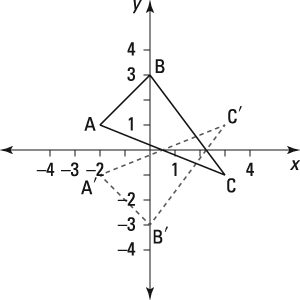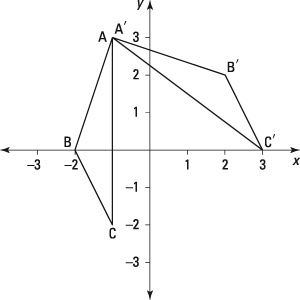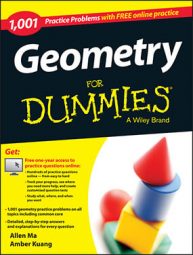In geometry, a transformation can change the size, location, or appearance of a geometric figure. Rigid motion refers to a limited transformation: only an object's location is changed, not its shape or size.
The following practice questions ask you to determine the rigid motion that will map one triangle onto another.
Practice questions
-

What rigid motion would map one triangle onto the other?

-

What rigid motion would map one triangle onto the other?

Answers and explanations
rx–axis
The figure shows that the x-axis is the line of symmetry for the two triangles. When you reflect over the x-axis, you negate the sign of the original y value. In this figure, A (–2, 1) maps to

Because the y value is negated, the point is reflected over the x-axis.
ry = –2x + 1
The figure shows that the line of symmetry has a y intercept at y = 1 and a slope of –2. Plugging this information into the slope-intercept form of a line makes y = –2x + 1 the line of symmetry for the two triangles.

